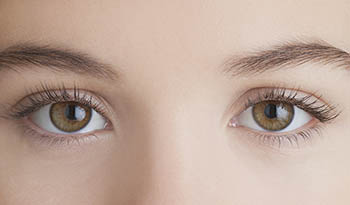10 Natural Approaches to Support Eye Health
DISCLAIMER:This blog does not intend to provide diagnosis...
- In this article:
- What is a Cataract?
- Risks For Cataracts
- Diet And Cataracts
- Lutein, Zeaxanthin, and Visual Health
- Pine Bark Extract is a Potent Antioxidant
- Quercetin and Anti-inflammatory Benefits
- Resveratrol’s Protective Benefits
- Selenium May Help Fight Oxidative Damage
- Spirulina’s Anti-inflammatory and Antioxidant Activities
- Vitamin C’s Studied Antioxidant Benefits
- Multivitamins for Overall Health

What is a Cataract?
A cataract is a progressive disorder formed over time due to the lens of the eye becoming cloudy. Cataracts are classified by doctors into three types — nuclear, cortical, and posterior subcapsular, and can lead to a severe loss of vision and sometimes complete blindness if left untreated.
Cataract surgery, a procedure in which the cloudy lens is removed and replaced with a new one, is not always possible. In countries where people have access to healthcare services, cataract surgery is quite routine in those aged 60 and older. However, there are many other places in the world where surgery is not a viable option. No matter where you live, preventing the formation of cataracts when you’re younger is a strategy that makes sense.
Risks For Cataracts
Medical doctors believe oxidation of the lens is the main reason a cataract occurs. Risk factors include excessive ultraviolet sunlight exposure, tobacco use, diabetes, high blood pressure, and certain medications, such as long-term use of oral corticosteroids (prednisone). Excessive alcohol intake also predisposes one to develop cataracts.
Diet And Cataracts
Antioxidants can help protect against the development of cataracts. A diet full of fruits and colorful vegetables contains numerous antioxidants, which are beneficial. A 2010 study concluded that a diet rich in vitamins and minerals could help delay the development of cataracts. Further, a 2013 study showed that a diet high in fruits, vegetables, and vitamin C could help prevent cataracts from forming in the first place.
Many herbs, vitamins, and minerals in foods and supplements have antioxidant properties that may help protect the eyes.
Lutein, Zeaxanthin, and Visual Health
These two common carotenoids are associated with optimal visual health. A study published in Molecules in 2017 showed that lutein and zeaxanthin have antioxidant and blue-light filtration properties, which can help improve vision. These antioxidants were found to prevent cataracts by inhibiting oxidative damage to the lens of the eye. The journal reported that people who took 6 to 10 mg per day of lutein reduced their chance of cataract surgery by 20 to 50 percent.
However, most research suggests that combining both lutein and zeaxanthin provides optimal benefit. Leafy green vegetables and fruits are good sources of both. When not adequately consumed through diet, a quality supplement should be taken. Suggested dose: as directed on the label.
Pine Bark Extract is a Potent Antioxidant
A potent antioxidant, pine bark extract was originally used by indigenous people of North America and Asia as a medicinal herb. French expeditioner Jacques Cartier, who claimed Canada for France, reportedly used pine bark extract during his expedition in 1535 as a treatment for scurvy, a condition caused by insufficient levels of vitamin C intake.
Today, integrative healthcare providers have also realized the many health and anti-aging benefits of pine bark extract, which was first introduced into the United States as a dietary supplement in 1987. There are several formulas on the market, and it can be taken as a capsule, used as an essential oil, or mixed into a lotion and applied topically.
Antioxidants are substances that protect tissue and organs against damaging free radicals. A study in Ophthalmic Research demonstrated that the antioxidant potency of pycnogenol was more powerful than vitamin C, vitamin E, alpha-lipoic acid, and coenzyme Q10.
A 2017 animal study by Dr. J. Kim showed that pine bark extract could prevent the formation of cataracts. A 2013 study also supported these findings. Suggested dose: 50 to 250 mg once or twice per day.
Quercetin and Anti-inflammatory Benefits
The polyphenol quercetin is a potent antioxidant that has been found to have anti-inflammatory effects and visual benefits. Some studies also demonstrate that quercetin has some positive effects on the gut microbiome, meaning that it helps healthy gut bacteria thrive.
Food sources include cranberries, black grapes, raspberries, green leafy vegetables, broccoli, raw red onions, black tea, and green tea.
A 2010 study discussed the possible mechanisms by which quercetin could help prevent the development of cataracts. A 2019 study also explored quercetin’s role in preventing cataracts in those with diabetes. Suggested dose: As directed on the label.
Resveratrol’s Protective Benefits
Resveratrol has been shown to have many functions. A phytonutrient, resveratrol is a naturally occurring, plant-based compound found in red wine, grapes, berries, and nuts. Its antioxidant properties protect the cell and its components from oxidative damage, which frequently causes the cell to lose its ability to control itself. It can also lead to increased risk of cataracts.
A 2006 study concluded that the consumption of resveratrol-rich foods could help reduce the risk of cataracts developing in senior citizens. Also, a 2016 study also demonstrated resveratrol’s protective benefits. Suggested dose: As directed on the label.
Selenium May Help Fight Oxidative Damage
Selenium is considered a trace mineral that plays an important role in the human body. It is required for more than 24 biochemical reactions, and its presence is required for cell reproduction, DNA synthesis, and to help protect against oxidative damage. Selenium exists in both a non-organic and organic form.
Food sources of selenium include brazil nuts, organ meats, and seafood. It can also be found in poultry, eggs, grains, and dairy products.
Due to its ability to help reduce oxidative damage, it appears to be helpful in the prevention of cataracts. A 2012 study using rats showed the protective benefit of selenium in preventing cataracts. Further, a 2018 study concluded, “Due to a confirmed association between serum selenium levels and age-related cataract, low serum selenium levels may constitute a potential risk factor of age-related cataract.” Suggested dose: As directed on label.
Spirulina’s Anti-inflammatory and Antioxidant Activities
Spirulina is considered a superfood by many. It is an easily digestible nutritional supplement, which belongs to a family of blue-green algae and can be taken in a pill or powder form. Spirulina comes from a type of bacteria scientists call cyanobacterium, specifically arthrospira platensis.
Traditionally, spirulina grew in the warm alkaline lakes of Africa, Hawaii, and Mexico among other places. Spirulina was used centuries ago by the Aztecs, according to Spanish records from the conquistadors—it grew in Lake Texcoco, Mexico, where the Aztecs called it tecuilati. European explorers observed locals near Africa's Lake Chad using it as food. In our modern era, spirulina has gained the attention of NASA scientists, who have used it as a wholesome nutritional supplement for astronauts in outer space.
Spirulina contains a complete source of protein, vitamins, minerals, and phytonutrients. In addition, spirulina has anti-inflammatory and antioxidant properties, which explain how they may help prevent cataracts.
Studies from 2013 and 2014 show that spirulina consumption may help stop cataracts from developing. Suggested dose: as directed on the label.
Vitamin C’s Studied Antioxidant Benefits
Vitamin C, also known as ascorbic acid or ascorbate, has been one of the most researched vitamins over the last 100 years. A search of the scientific literature reveals that over 65,000 studies have been conducted on vitamin C since the 1920s. Many findings show that it helps promote a strong immune system as well as cardiovascular, brain, and eye health among many other benefits.
Many scientists believe that at one time the human body had the ability to make vitamin C, but lost this capacity over time. Essentially, all species of animals, including most mammals, can make vitamin C—the exceptions are humans, monkeys, and guinea pigs. The brain and adrenal glands have the highest concentrations of vitamin C at 15 to 50 times higher than those found in the blood. Vitamin C, which has antioxidant properties, is also an enzyme “co-factor” for at least eight important biochemical reactions.
According to a 2009 study in The American Journal of Clinical Nutrition, over seven percent of people age six and older were vitamin C deficient when their blood was tested. More than half of those surveyed consumed low amounts of vitamin C-rich foods. These foods include citrus, strawberries, mangos, peppers and more.
A 2011 study out of India found that those with the lowest levels of vitamin C in their blood were 39 percent more likely to develop cataracts compared to those with higher vitamin C blood levels.
Further, a 2014 study in Ophthalmology also demonstrated those with higher blood levels of vitamin C were less likely to have cataracts. Other studies have shown similar findings. Suggested dose: 500 to 2,000 mg per day.
Multivitamins for Overall Health
A multivitamin should never be expected to replace a healthy, well-rounded diet. The World Health Organization estimates that 2 billion people worldwide have an inadequate intake of vitamins and minerals. Studies show that many Americans also have an inadequate intake of several essential vitamins and minerals. The recent 2015–2020 Dietary Guidelines for Americans identified fat-soluble vitamins A, D, E as being under-consumed while the water-soluble vitamin C and choline were also under-consumed.
A 2014 study in Nutrients showed those who took a multivitamin were 34 percent less likely to develop cataracts. A quality multivitamin may help provide one with additional assurance.
A 2014 study in Ophthalmology published the results of a randomized, double-blind, placebo-controlled trial. In total, the study followed 14,641American male physicians aged ≥50 years for over 11 years. Half took a daily multivitamin while the other half a placebo. At the end of the study, those who took the multivitamin had 9 percent fewer cataracts. It is important to note that most multivitamins only contain around 60 mg of vitamin C, a minimal dose. Many who take a multivitamin often supplement with additional individual vitamins on an as-needed basis. Suggested multivitamin dose: as directed on the label.
References:
- Mares JA, Voland R, Adler R, et al. Healthy diets and the subsequent prevalence of nuclear cataract in women. Arch Ophthalmol. 2010;128(6):738‐749. doi:10.1001/archophthalmol.2010.84
- Pastor-Valero M. Fruit and vegetable intake and vitamins C and E are associated with a reduced prevalence of cataract in a Spanish Mediterranean population. BMC Ophthalmology. 2013;13:52. doi:10.1186/1471-2415-13-52.
- 3 Jia, Yu-Ping et al. The Pharmacological Effects of Lutein and Zeaxanthin on Visual Disorders and Cognition Diseases. Molecules. 2017
- Hayashi R, Hayashi S, Arai K, Sakai M, Okamoto H, Chikuda M. The gender-differentiated antioxidant effects of a lutein-containing supplement in the aqueous humor of patients with senile cataracts. Exp Eye Res. 2014;129:5‐12. doi:10.1016/j.exer.2014.10.009
- Iravani S, Zolfaghari B. Pharmaceutical and nutraceutical effects of Pinus pinaster bark extract. Res Pharm Sci. 2011;6(1):1‐11.
- Kim J, Choung S-Y. Pinus densiflora bark extract prevents selenite-induced cataract formation in the lens of Sprague Dawley rat pups. Molecular Vision. 2017;23:638-648.
- Trevithick JR, Bantseev V, Hirst M, Dzialoszynski TM, Sanford ES. Is pycnogenol a double-edged sword? Cataractogenic in vitro, but reduces cataract risk in diabetic rats. Curr Eye Res. 2013;38(7):751‐760. doi:10.3109/02713683.2013.770038
- Food Chem Toxicol. 2018 Oct 15. pii: S0278-6915(18)30775-0. doi: 10.1016/j.fct.2018.10.042.
- Stefek M, Karasu C. Eye lens in aging and diabetes: effect of quercetin. Rejuvenation Res. 2011;14(5):525‐534. doi:10.1089/rej.2011.1170
- Patil KK, Meshram RJ, Barage SH, Gacche RN. Dietary flavonoids inhibit the glycation of lens proteins: implications in the management of diabetic cataract. 3 Biotech. 2019;9(2):47. doi:10.1007/s13205-019-1581-3
- Doganay S, Borazan M, Iraz M, Cigremis Y. The effect of resveratrol in experimental cataract model formed by sodium selenite. Curr Eye Res. 2006;31(2):147‐153. doi:10.1080/02713680500514685
- Biomed Pharmacother. 2017 Feb;86:232-241. doi: 10.1016/j.biopha.2016.11.141. Epub 2016 Dec 19.
- Zhu X, Lu Y. Selenium supplementation can slow the development of naphthalene cataract. Curr Eye Res. 2012;37(3):163‐169. doi:10.3109/02713683.2011.639123
- Post M, Lubiński W, Lubiński J, et al. Serum selenium levels are associated with age-related cataract. Ann Agric Environ Med. 2018;25(3):443‐448. doi:10.26444/aaem/90886
- Karkos PD, Leong SC, Karkos CD, Sivaji N, Assimakopoulos DA. Spirulina in Clinical Practice: Evidence-Based Human Applications. Evidence-based Complementary and Alternative Medicine : eCAM. 2011;2011:531053. doi:10.1093/ecam/nen058.
- Spirulina, The Whole Food Revolution by Larry Switzer
- https://ntrs.nasa.gov/archive/nasa/casi.ntrs.nasa.gov/19890016190.pdf
- Biol Trace Elem Res. 2013 Jan;151(1):59-67. doi: 10.1007/s12011-012-9526-2. Epub 2012 Oct 20.
- Gaby, Alan. Nutritional Medicine , Second Edition April 2017 Harrison FE, May JM. Vitamin C function in the brain: vital role of the ascorbate transporter SVCT2. Free Radic Biol Med. 2009;46(6):719–30. doi: 10.1016/j.freeradbiomed.2008.12.018.
- American Journal of Clinical Nutrition. 2009 Nov;90(5):1252-63. doi: 10.3945/ajcn.2008.27016. Epub 2009 Aug 12.
- Ravindran RD, Vashist P, Gupta SK, et al. Inverse Association of Vitamin C with Cataract in Older People in India. Ophthalmology. 2011;118(10):1958-1965.e2. doi:10.1016/j.ophtha.2011.03.016.
- Heruye SH, Maffofou Nkenyi LN, Singh NU, et al. Current Trends in the Pharmacotherapy of Cataracts. Pharmaceuticals (Basel). 2020;13(1):15. Published 2020 Jan 16. doi:10.3390/ph13010015
- Allen L., de Benoist B., Dary O., Hurrell R. Guidelines on Food Fortification with Micronutrients. World Health Organization; Geneva, Switzerland: 2006
- U.S. Department of Health and Human Services. U.S. Department of Agriculture . 2015–2020 Dietary Guidelines for Americans. 8th ed. USDA; Washington, DC, USA: 2015. [(accessed on 17 January 2017)]. Available online: http://health.gov/dietaryguidelines/2015/guidelines/
- Zhao L-Q, Li L-M, Zhu H, The Epidemiological Evidence-Based Eye Disease Study Research Group. The Effect of Multivitamin/Mineral Supplements on Age-Related Cataracts: A Systematic Review and Meta-Analysis. Nutrients. 2014;6(3):931-949. doi:10.3390/nu6030931.
- Christen WG, Glynn RJ, Manson JE, et al. Effects of multivitamin supplement on cataract and age-related macular degeneration in a randomized trial of male physicians. Ophthalmology. 2014;121(2):525‐534. doi:10.1016/j.ophtha.2013.09.038

 By Dr. Eric Madrid, M.D.
By Dr. Eric Madrid, M.D.


